
“So long as we are ruled by fear and distrust, it’s impossible to solve the problems of the world. The more trust grows and the more fear diminishes, the more the problem will shrink.” – Kees Boeke
What is sociocracy?
It’s a governance system. Governance is what connects people working together on a project. Without a governance system, not much would happen – there needs to be decision-making structures and procedures to make it all happen. There are two parts to governance:
- Who decides what, and who does what?
- How are decisions made?
Sociocracy answers those questions.

The basic idea is to create small groups (or ‘circles’), that are able to have deep and meaningful conversations. In a medium-sized organisation there might be 20 circles, that have clear areas of decision-making. Ideally, those circles will contain 4-7 people – small enough that people can really listen to each other. The people making the decisions in a circle will be the people who do the work covered by those decisions. which is different from a hierarchical organisation, where some people do things and some people decide things.
How it works
Rounds: everyone in the circle takes a turn to give their opinion about something – so that everyone is heard, without interruption. People can pass, unless it’s a consent round, and there can be ‘check-in’ and ‘check-out’ rounds at the beginning and the end of the meeting.

Consent: the group is asked whether a proposal is good enough to try, and if there are any objections – the idea is to keep talking until no-one objects; this is different from consensus, where everyone has to agree with a proposal.
Review: policies have review dates, to see if they’re working well.
Nesting: circles are ‘nested’ together – in that they have sub-circles, and are also part of wider circles. So for example, an organisation may have a marketing circle, which has a social media sub-circle, which has a Twitter sub-circle – and so on. This is reflected in nature – a leaf is part of a branch, is part of a tree, is part of a forest etc.
Double-linking: every circle has a ‘leader’ and a ‘delegate’. These two participate in a circle at the next level. In the example above, the leader communicates the overall task from the marketing circle to the social media sub-circle, and the delegate communicates the thoughts of the sub-circle to the marketing circle. In a large organisation, this can continue through several layers of circles to a general / central circle. A circle can request feedback from other circles on the efficacy of decisions.
History
Gerard Endenburg developed the ‘Sociocratic Circle Organizing Method’ in the Netherlands in the late 60s / early 70s, but the concept is much older. The term sociocracy was coined in 1851 by Auguste Comte, and in 1881, US sociologist Lester Frank Ward argued that liberal democracy should evolve into sociocracy for national governments, not just businesses and organisations.
By the mid-20th century, Kees Boeke and Beatrice Cadbury (influenced by the Quakers) had implemented the first sociocratic structure in any institution – a school in the Netherlands – and Endenburg was a student, who went on to develop their ideas for businesses, starting with his own company.
It’s been used extensively in non-profits, co-ops, intentional communities, etc., but people don’t have to pay or register to use sociocracy – you can learn it, use it, or use parts of it – and so it’s very difficult to know how widespread its use is.
Tanzania had plans for sociocratic-type governance for the entire country, with its Ujamaa system in the 1960s.

What are the benefits of sociocracy?
Sociocracy is very different from top-down, hierarchical decision-making, where people can have strong ideas about how to improve something, but feel unable to voice those ideas in ways that will be heard.
It’s often difficult and time-consuming to arrive at decisions using consensus – especially with larger groups; and it can be de-motivating for the ‘doers’ when their ideas are shut down because it was impossible to reach consensus. Consensus groups can become conservative because innovators give up trying to get their ideas accepted. Sociocracy unleashes the power of small groups to move things forward (although, of course, a more conservative group could work well for a lot of people – especially living groups rather than businesses).

Smaller groups make it much easier for introverts to speak and to have their voices heard. In large groups, just a few people – usually extroverts – can sometimes dominate the conversation.
Consent prevents people from saying: ‘I don’t agree, but do it anyway’, in which case people can blame others for things that don’t work, or even play the ‘I told you so’ card. Decisions are taken collectively, so that blame doesn’t fall on individuals.
People who actually do the work understand the job and the processes best (rather than managers who aren’t involved in the work itself).
The best indicator of whether a proposal is good is to try it and see what happens. No-one can see into the future, and sociocratic consent helps groups arrive at decisions relatively quickly, so that they can be tried out. Talking endlessly about a hypothetical situation to arrive at the ‘best’ solution may hinder the implementation of a good solution.
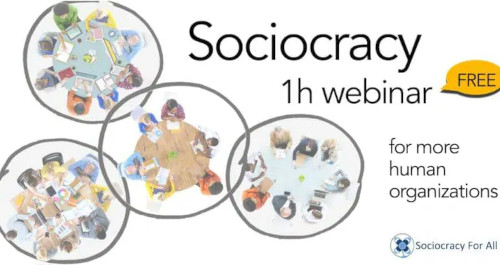
Sociocracy isn’t a cure-all, but there’s a sociocratic ‘attitude’ that can be amended to suit most organisations better than traditional hierarchical decision-making, that doesn’t call on everyone’s wisdom and experience, and takes away agency from workers.
Sociocracy gives a flavour of what a truly decentralised society could be like, where people can govern themselves locally instead of having government imposed from above.
Potential downsides
Some people don’t actually want to take responsibility for decision-making – even with decisions that affect them directly. They’d rather be told what to do.
It might be used too rigidly, and cause decision-making processes to seize up. Dogmatism can happen in any system, including sociocracy – but a guiding principle is that no-one is ignored, so dogmatic ideas can’t be imposed without hearing objections. According to Ted Rau of Sociocracy For All, the longer people practice sociocracy, the less dogmatic they become.
It can be used as window-dressing for a hierarchical organisation, without changing the real power structure.
Sociocracy can be used by giant corporations as well as by local, co-operative, community-based organisations, in which case circles will be able to make decisions about operations, but not about ownership, or where the money goes. However, if people in those corporations get used to collective rather than top-down decision-making, they might start to question the ownership of the organisation, and how the money moves within it. It’s a way of helping devise ownership structures that members of a corporation would actually like to see.
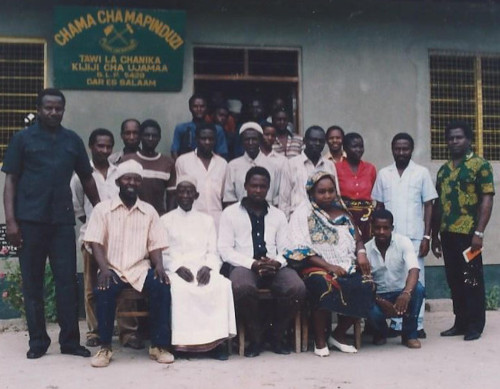
What can I do?
Learn more about it first – there are books, and online training, and if required, a little ongoing coaching / hand-holding.
If you’re working in a co-op, or thinking of starting one, there’s a lot of information about sociocracy in co-ops on the Co-ops UK website.
Start small: if you’re trying to introduce sociocracy to your organisation, be aware that some people react against anything new, seeing it as a burden, that they’ll have to learn and get used to. It might be better to introduce the elements one-by-one – maybe using rounds first, then asking for consent etc., to see how it goes, without presenting it as a new system from the beginning. If you’re really excited by sociocracy, try to find a few allies, or you might be frustrated.

You have to be careful that sociocracy doesn’t clash with the legal structures of companies, including co-ops, where ultimate decision-making is vested in a board of directors, or where some decisions might need to be made by a vote of all members. In this case, decisions could be made (or draft policies prepared) sociocratically, then ratified in ways that conform to the legal set-up.
You can tweak the general idea to suit the specific circumstances of your organisation; and there have been spin-offs that are different enough from the original idea to have their own name.

Holacracy
The best know of these is holacracy, which is used a lot in for-profit organisations. A much-simplified explanation of the difference is that holacracy places more emphasis on roles than circles. So in sociocracy, decisions are more collective, whereas in holacracy, authority can ‘cluster’ in roles occupied by individuals (although this can happen sometimes in sociocracy too). So it could be said to be more individualistic, with certain individuals having more authority; it’s also been described as being stricter in the decision-making, in that there’s a fixed pattern for explaining objections, whereas in sociocracy you can explain your objections any way you like.
Thanks to Ted Rau of Sociocracy For All (SoFA) for information.
The specialist(s) below will respond to queries on this topic. Please comment in the box at the bottom of the page.

Ted Rau is an advocate, trainer and consultant for self-governance. His main focus is sociocracy. After his PhD in linguistics and work in academia, he co-founded Sociocracy For All and spends his days consulting, teaching and leading the 180-member organization as Executive Director. As a volunteer, he serves on the board of the Center For Nonviolent Communication.
The views expressed here are those of the author and not necessarily lowimpact.org's





 Co-operatives
Co-operatives
 Cohousing
Cohousing
 Commoning
Commoning
 Community
Community
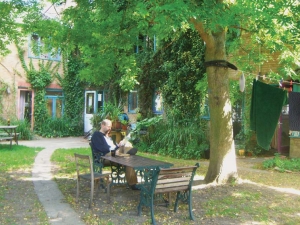 Housing co-operatives
Housing co-operatives
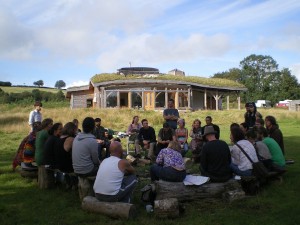 Intentional communities
Intentional communities
 Personal development
Personal development
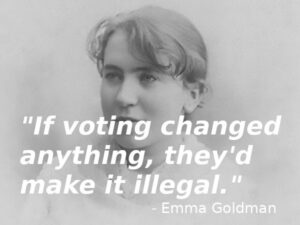 The democracy problem
The democracy problem


